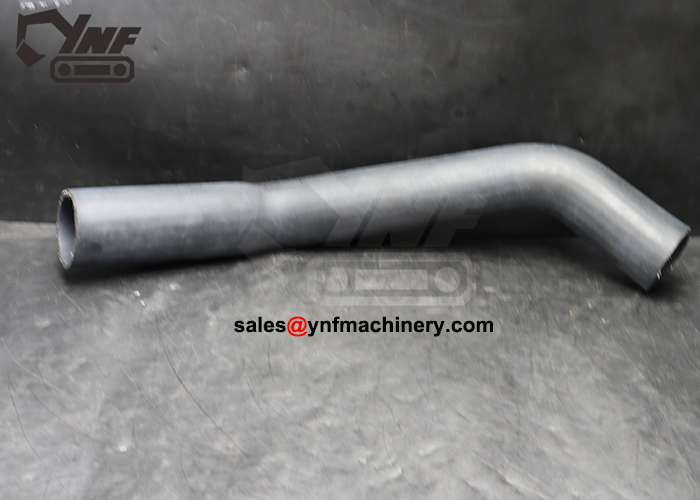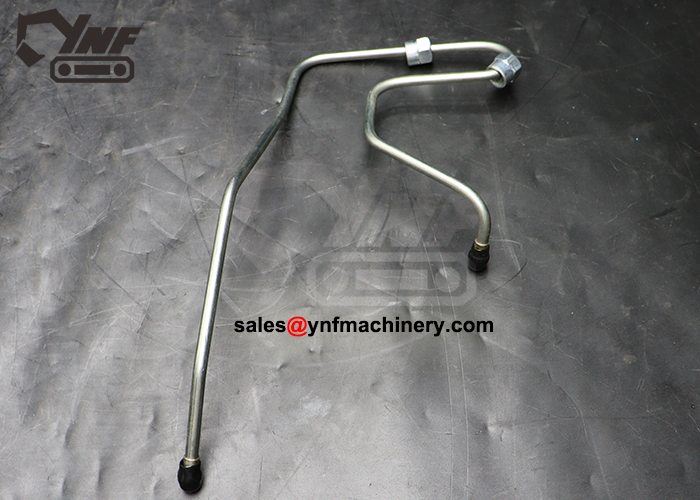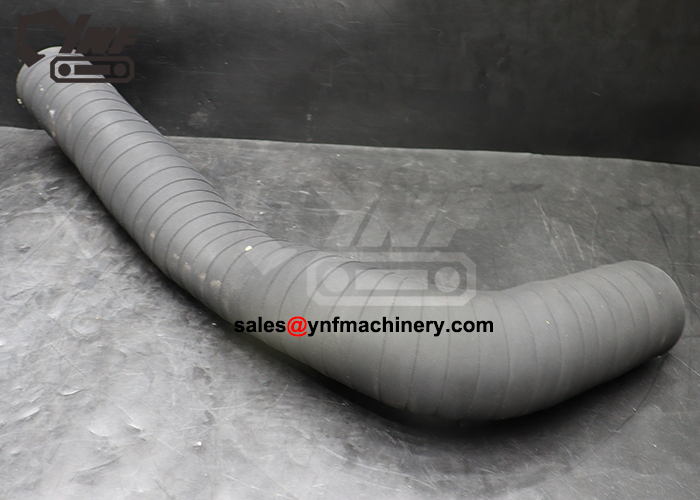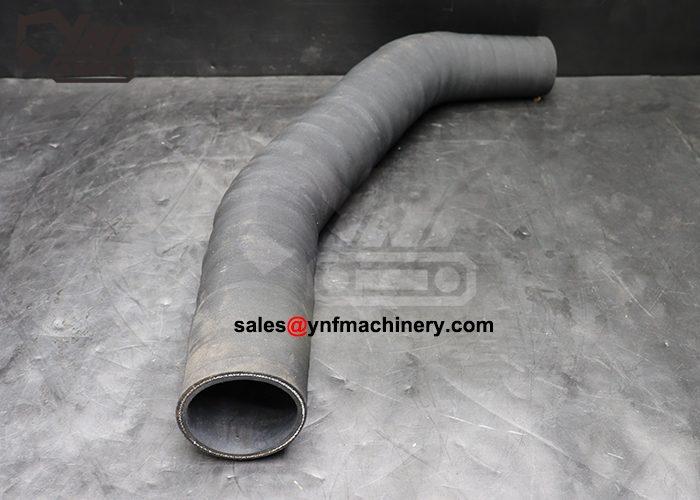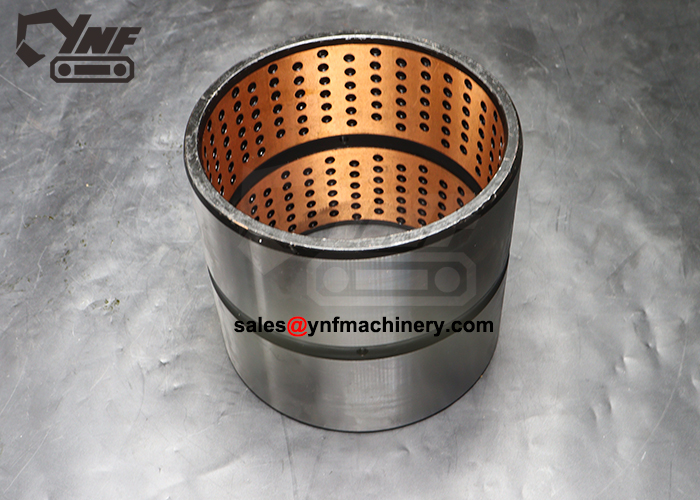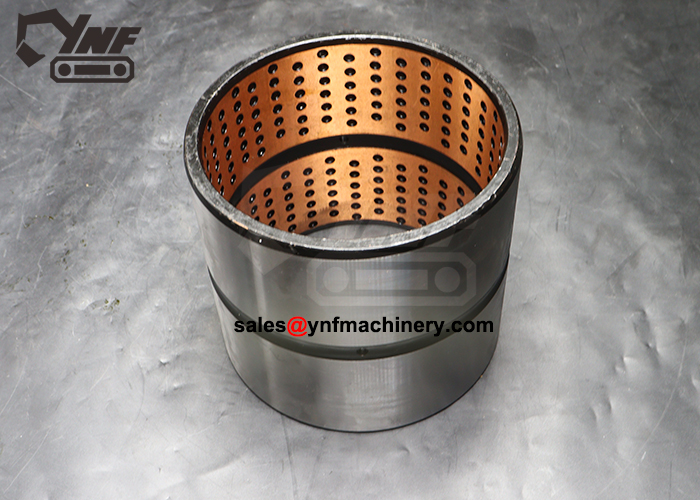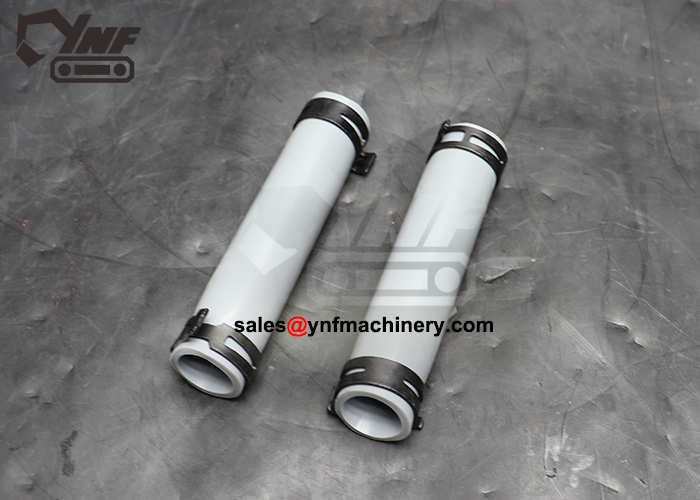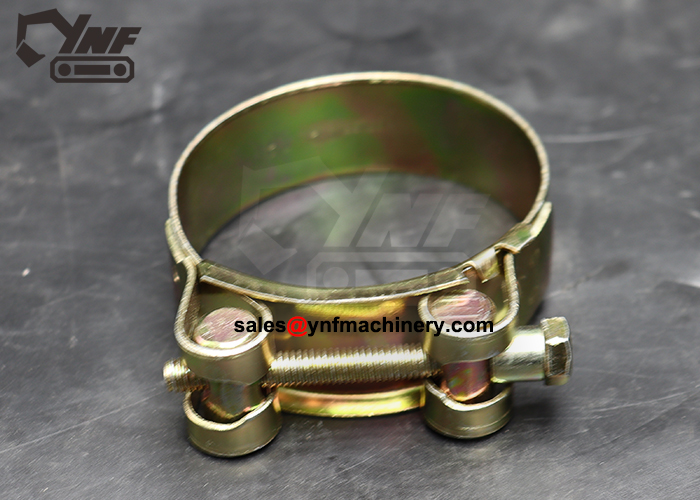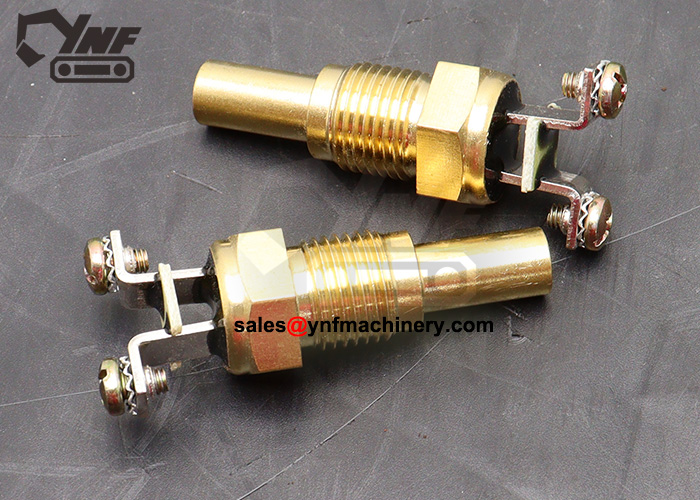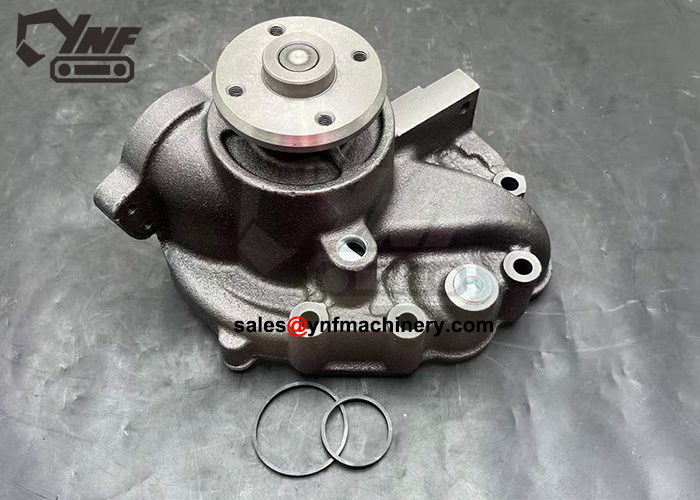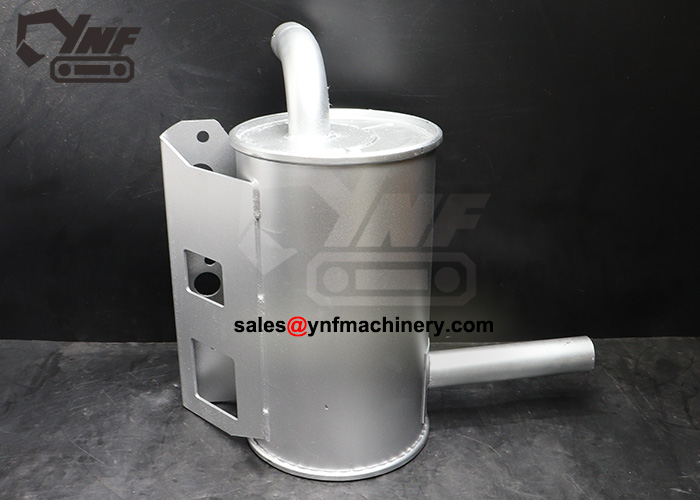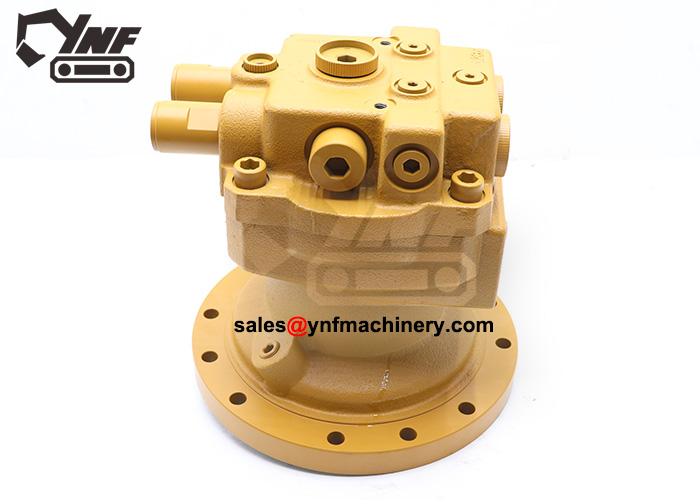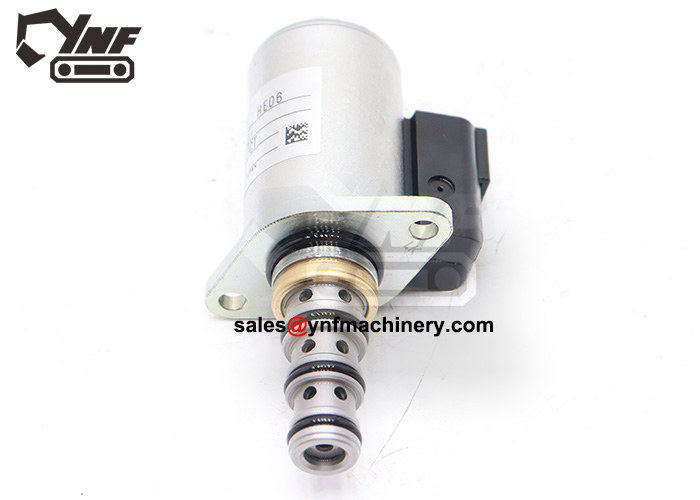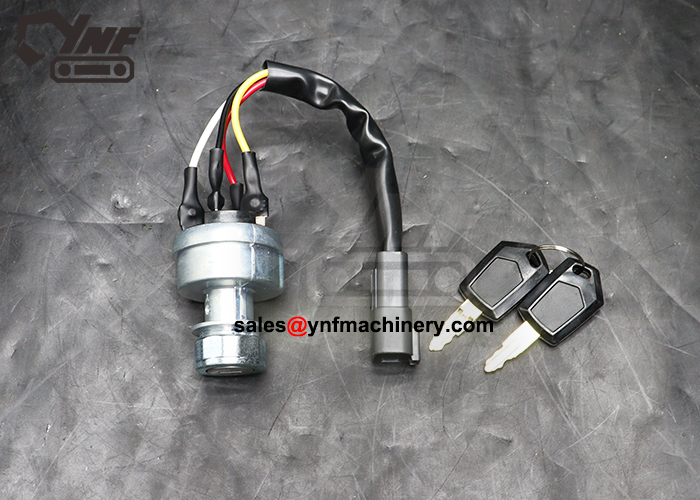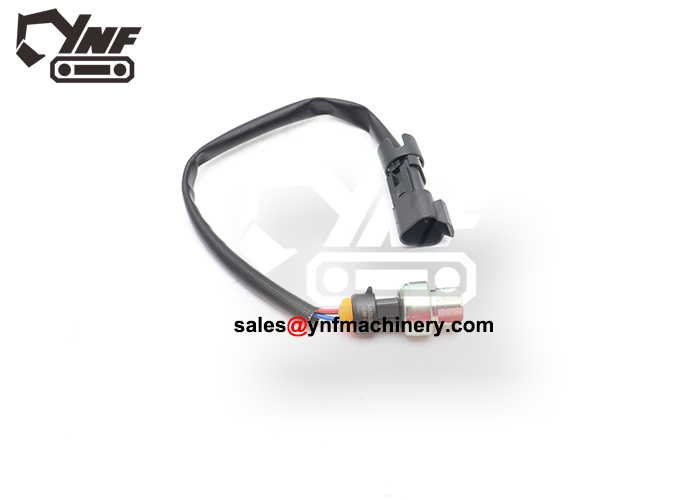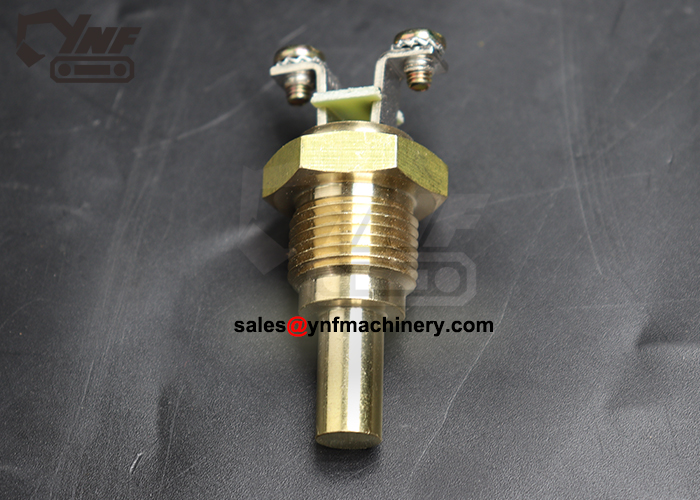Caterpillar Excavator Parts
Caterpillar excavator parts are built for precision, strength, and machine compatibility. YNF Machinery supplies genuine-quality replacement parts for Caterpillar models to help keep your fleet running efficiently.
Key Features:
-
Compatible with CAT mini, medium, and large excavators
-
Covers hydraulic, engine, undercarriage, and body components
-
High interchangeability with OEM parts
-
Strict part number matching and product traceability
-
Flexible MOQ, fast global delivery
-
Trusted by buyers in over 60 countries
Choose Caterpillar Parts Series for Excavator Upkeep
Our Caterpillar parts catalog includes a wide selection of engine components, hydraulic cylinder kits, couplings, seals, filters, pins, bushings, and track parts. Whether you’re maintaining a CAT 307 or a 336D, we help you match the exact parts required through accurate part number identification and expert sourcing.
Advantages of Our Caterpillar Parts
YNF Machinery ensures accurate part identification, quick response, and quality-verified replacements for CAT excavators. With deep supply chain integration and professional support, we minimize your downtime and procurement risk.
Why Choose YNF Caterpillar Parts to Maintain Your Equipment
YNF Machinery supplies Caterpillar parts that meet global standards for durability and fit. Our deep industry expertise helps you reduce delays, avoid mismatches, and maintain peak equipment performance—backed by responsive service and fast delivery.
Caterpillar Excavator Parts Applications
Construction Projects
Supports daily wear parts replacement for CAT excavators on job sites.
Mining Operations
Used in high-load environments like drilling and material excavation.
Municipal Works
Reliable for road, pipeline, and foundation work machinery.
Rental Fleets
Ensures CAT machines stay functional with quick maintenance.
More About Caterpillar Excavator Components
Popular CAT Models We Support
| Model | Common Parts Supplied |
|---|---|
| CAT 307D | Seal kits, engine couplings, swing bearings |
| CAT 320C | Hydraulic hoses, oil filters, pins, bushes |
| CAT 336D2 | Final drives, travel motors, undercarriage |
How to Identify the Right CAT Part
-
Provide machine model + serial number
-
Part number (if available)
-
Photos and sizes for verification
Quality & Testing
-
Factory-tested for pressure, hardness, and fit
-
Materials include high-grade steel, nitrile rubber, and polyurethanes
-
ISO-certified partners and full inspection reports
Logistics & Support
-
Global shipment by DHL, sea, or air freight
-
Packaging per export standards
-
Payment: PayPal, Western Union, T/T (EXW, FOB, CIF available)
FAQ
Q: Do you supply genuine CAT parts?
A: We supply aftermarket parts with OEM-level quality. For genuine CAT, we may assist depending on availability.
Q: Can you consolidate multiple parts into one shipment?
A: Yes, we support mixed orders to save on logistics costs.
Aftermarket vs Genuine Caterpillar Excavator Parts Pros and Cons
Caterpillar excavator parts are important for top equipment performance. For example, the Cat 323 excavator uses 25% less fuel than others. This shows how good-quality parts improve efficiency. OEM parts will have 53.1% of the market by 2025. They are reliable and trusted in the industry. Picking the right parts helps your excavator last longer and work better.
Key Takeaways
- Picking original parts gives top quality and perfect fit. This helps your Caterpillar excavator work better and last longer.
- Non-original parts cost less at first but might cost more later. They can have lower quality and need replacing more often.
- Think about your excavator’s age, money, and project needs. This will help you choose between original and non-original parts wisely.
Definitions and Overview
What Are OEM Caterpillar Excavator Parts?
OEM parts are made by the same company as your excavator. They fit perfectly and work well with your machine. These parts are built to meet the maker’s original standards. Choosing OEM parts means you get reliable and high-quality replacements. They are tested to ensure they work properly. This makes them a good choice for keeping your excavator strong and efficient.
What Are Aftermarket Parts for Caterpillar Excavators?
Aftermarket parts are made by other companies, not Caterpillar. They are cheaper and easier to find than OEM parts. However, they may not be tested as much as OEM parts. Some aftermarket parts focus on being cheap, not lasting long. This can cause them to wear out faster or work poorly. Also, using aftermarket parts might cancel your equipment’s warranty. This could be risky for long-term use.
Key Differences Between OEM and Aftermarket Parts
OEM and aftermarket parts differ in who makes them, quality, and price. OEM parts are made by the original company and fit perfectly. Aftermarket parts are made by other companies and vary in quality. OEM parts last longer and are more reliable. Aftermarket parts may need replacing more often because they don’t last as long. They cost less at first but might cost more over time. Picking between them depends on your budget and needs.
Quality and Durability Comparison
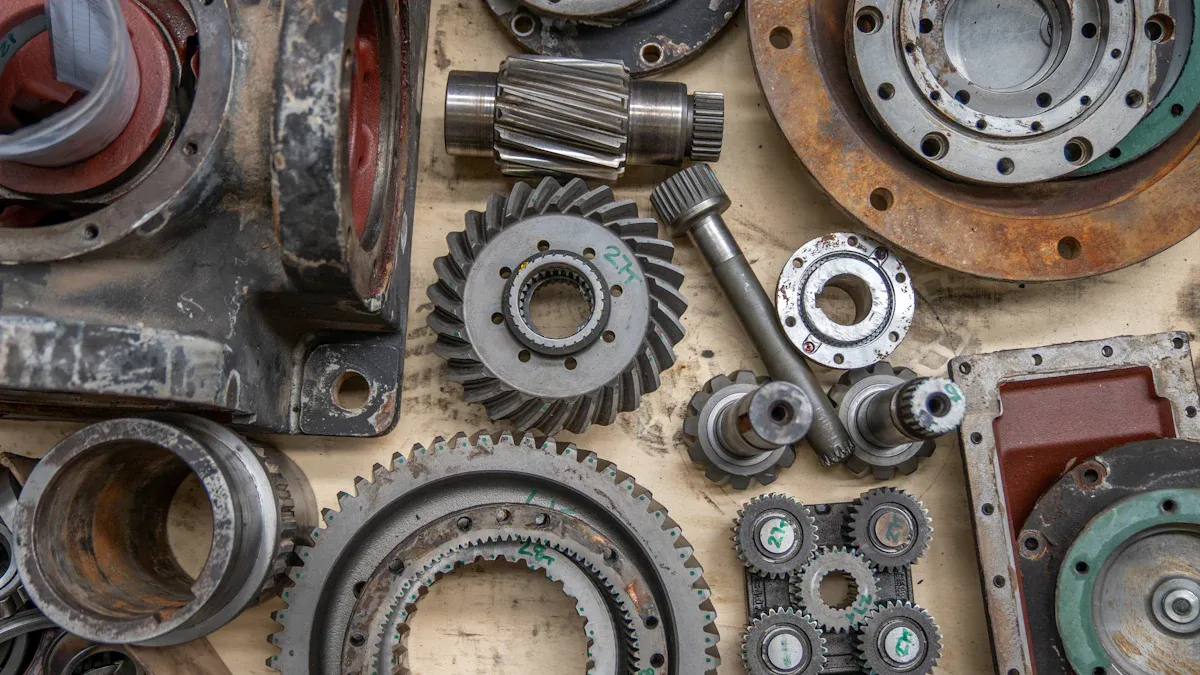
Quality Standards of OEM Parts
OEM parts for Caterpillar excavators are made to meet strict rules. They go through tough tests to ensure they work well.
- ISO Certifications: These show OEM parts are made and installed correctly.
- CAPA Certification: This proves replacement parts are tested for high quality.
- Safety Standards: OEM safety parts are tested to work in all conditions.
These tests make OEM parts reliable for keeping your equipment strong. Their high standards ensure they fit well and last longer. This makes them a smart choice for long-term use.
Evaluating Quality Aftermarket Parts
Aftermarket parts can be good or bad, depending on who makes them. Some are high-quality, but others focus on being cheap. To check their quality, look at these features:
| Feature | Cat® OEM | Jiarui Premium | Standard Aftermarket |
|---|---|---|---|
| Material Grade | HNBR | Medical-grade HNBR | Industrial HNBR |
| Precision Tolerance | ±0.03mm | ±0.01mm | ±0.05mm |
| Backup Rings | Standard | PTFE-reinforced | Nylon |
| Warranty | 6 months | 24 months | 3 months |
Some brands, like Jiarui Premium, make aftermarket parts as good as OEM ones. But regular aftermarket parts often wear out faster and have shorter warranties.
Certifications like ISO 9001:2015 and ROHS/REACH can help find better aftermarket parts. Reports from Caterpillar also show how well these parts work with your machine.
Durability and Longevity: OEM vs Aftermarket
Durability is key when choosing excavator parts. OEM parts are strong because of their design and testing. Lab tests prove their high performance:
| Methodology | Description |
|---|---|
| Electrical Testing | Checks if devices meet OEM electrical standards. |
| Acoustic Performance Measurement | Tests sound quality for safety and effectiveness. |
| Material Analysis | Studies materials to ensure strength and safety compliance. |
Field tests show OEM parts last longer in tough conditions.
Aftermarket parts have mixed results in durability tests. For example, wear tests on teeth from different brands showed similar results to OEM parts.
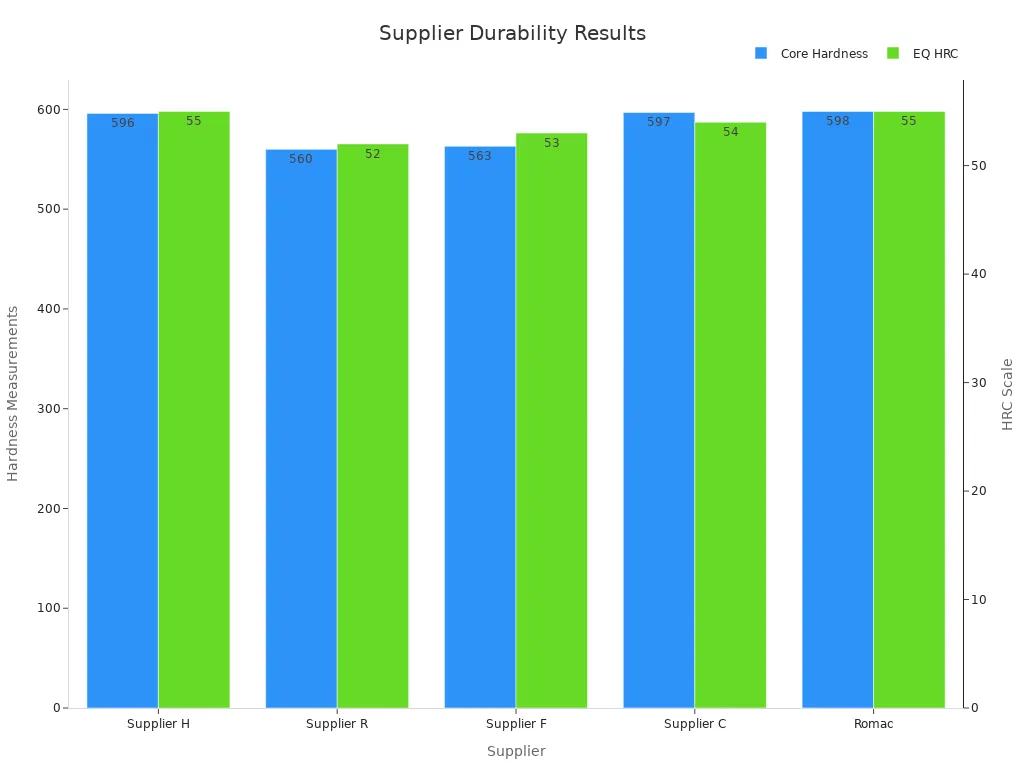
Still, aftermarket parts often don’t last as long as OEM ones. They may need replacing more often. Some premium aftermarket brands now make stronger parts that last longer and work better.
Cost Analysis
Upfront Costs: OEM vs Aftermarket Parts
OEM parts cost more upfront because they are made by Caterpillar. They follow strict rules to ensure they fit and work well. These parts are tested and engineered carefully, which raises their price.
| Part Type | Upfront Cost | Long-term Cost | Quality |
|---|---|---|---|
| OEM Parts | Higher | Lower long-term costs | Better quality |
| Aftermarket Parts | Lower | Higher long-term costs possible | Quality varies |
Aftermarket parts are cheaper and save money right away. They are made by other companies and cost less than OEM parts. Between 2010 and 2016, the price gap between OEM and aftermarket parts got smaller. Domestic radiator prices dropped 26%, while aftermarket ones rose 2%. This makes aftermarket parts a good choice for saving money now.
Still, picking good aftermarket parts takes research. Not all aftermarket parts, like hydraulic cylinders, are as good as OEM ones. Buying from trusted brands like YNF Machinery can help you find strong and reliable parts.
Long-Term Cost Considerations
Upfront savings matter, but long-term costs are often more important. OEM parts last longer and need fewer replacements. Their durability lowers repair costs over time, making them worth the investment for heavy equipment like Caterpillar excavators.
Here’s a breakdown of long-term costs:
| Cost Type | Details |
|---|---|
| Acquisition | Includes buying, engineering, and equipment costs. |
| Commissioning | Covers setup, testing, and technical help. |
| Operation | Includes energy, workers, and facility costs. |
| Maintenance | Covers repairs and upkeep staff. |
| Production | Includes downtime and extra costs for backup systems. |
| Disposal | Includes removal costs minus any recycling value. |
Aftermarket parts cost less upfront but may cost more later. They are 20–65% cheaper than OEM parts but wear out faster. This can lead to higher repair and replacement costs. Choosing aftermarket parts from trusted brands like YNF Machinery can reduce these risks and save money.
Balancing Cost and Quality
Choosing between OEM and aftermarket parts means balancing cost and quality. OEM parts are high-quality and fit perfectly, making them great for tough jobs. Repair shops prefer OEM parts five times more than aftermarket ones because they last longer.
But aftermarket parts have benefits too. They cost less and are easier to find, especially for older machines. Some premium aftermarket brands make parts as good as OEM ones. For example, aftermarket hydraulic cylinders from good companies can work well for less money.
To decide, think about your machine’s age, condition, and needs. If saving money is key but you still want decent quality, buying aftermarket parts from trusted suppliers like YNF Machinery is a smart choice.
Compatibility and Availability
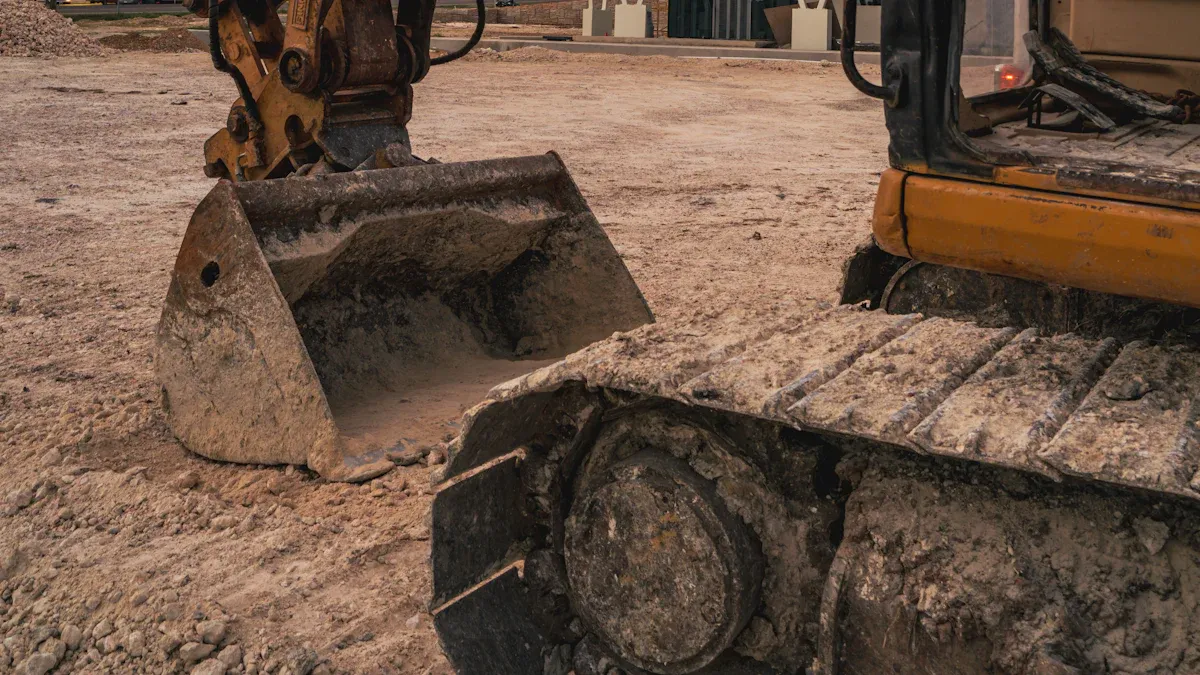
How OEM Parts Fit Caterpillar Excavators
OEM parts are made to fit Caterpillar excavators perfectly. They match the exact size and design of your machine. This means they fit right and work well without problems. For example, OEM engine parts or hydraulic cylinders work smoothly with your equipment. This perfect fit reduces repair time and keeps your excavator strong. Using OEM parts helps keep your machine working like new.
Problems with Aftermarket Parts Fitting
Aftermarket parts can have trouble fitting Caterpillar excavators. These parts are made by other companies, so they might not fit right. Differences in size, materials, or design can cause problems. For example, aftermarket hydraulic seals may not handle high pressure like OEM ones. This can make them wear out faster. Also, using the wrong aftermarket parts might cancel your warranty. Some premium aftermarket brands try to match OEM quality, but many still have issues.
Finding OEM and Aftermarket Parts
OEM and aftermarket parts are available in different ways. OEM parts are sold by official dealers, which guarantees they are real. But they might be harder to find in faraway places. Market data shows OEM parts make up 65.7% of sales. Aftermarket parts are easier to find in stores and make up 71.4% of the market in 2024. The demand for aftermarket parts is growing, with a 6.5% yearly increase expected from 2025 to 2033. While OEM parts are reliable, aftermarket parts are often easier to get and more convenient for many users.
Decision-Making Factors
Considering Equipment Age and Condition
The age and state of your machine matter when picking parts. Older machines might work well with aftermarket parts because they cost less. Aftermarket parts are also easier to find for older models. OEM parts for discontinued machines can be hard to locate. If your equipment is newer or under warranty, OEM parts are better. They fit perfectly and keep your machine running smoothly. Regular checks help decide if you need durable OEM parts or cheaper aftermarket ones for simple tasks.
Budget Constraints and Cost Priorities
Your budget affects whether you pick OEM or aftermarket parts. Maintenance costs are often 2% to 5% of the machine’s value. In 2018, factories spent 9.7% of their budgets on maintenance. OEM parts last longer but cost more upfront, which can strain tight budgets. Aftermarket parts are cheaper and good for less important parts. Looking at past spending can help plan future costs and manage money wisely.
Performance Needs and Project Requirements
Your project’s needs should guide your choice of parts. OEM parts are best for jobs needing high precision and reliability. For example, OEM hydraulic cylinders work well under heavy loads. Aftermarket parts can handle simpler tasks if bought from trusted brands. Think about quality, cost, and risks when choosing parts.
| Benchmark Type | Description |
|---|---|
| Quality Standards | Rules for how good the parts must be |
| Performance Metrics | Ways to measure how well the parts work |
| Resource Utilization | Using time, money, and workers wisely |
| Risk Management | Handling risks and avoiding problems |
| Success Criteria | Goals to measure if the project is successful |
Matching parts to these benchmarks helps your projects run smoothly and save money.
Picking OEM or aftermarket Caterpillar excavator parts depends on your needs. OEM parts are high-quality and work well for tough jobs. Aftermarket parts cost less and are easier to find in stores. Think about your machine’s age, budget, and work requirements. This will help you choose the best parts for your excavator.
FAQ
What problems can happen with aftermarket parts for Caterpillar excavators?
Aftermarket parts might not fit right, which lowers performance. Bad materials can wear out quickly. Always check if they fit and are good quality.
Tip: Buy aftermarket parts from trusted brands to avoid problems.
Can using aftermarket parts cancel my Caterpillar excavator’s warranty?
Yes, aftermarket parts can cancel your warranty. Caterpillar warranties usually need OEM parts to work properly and meet rules.
How can I find good-quality aftermarket parts?
Look for certifications like ISO 9001:2015. Check the material, warranty, and reviews. Good suppliers share details and test results for their parts.
Note: Some premium aftermarket brands are as good as OEM parts but cost less.

